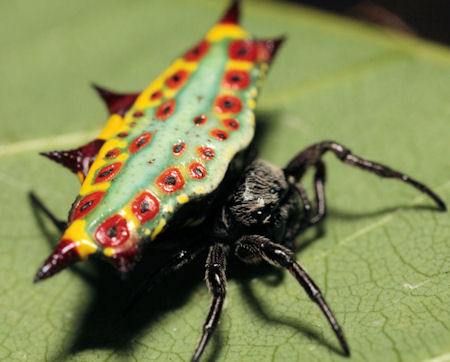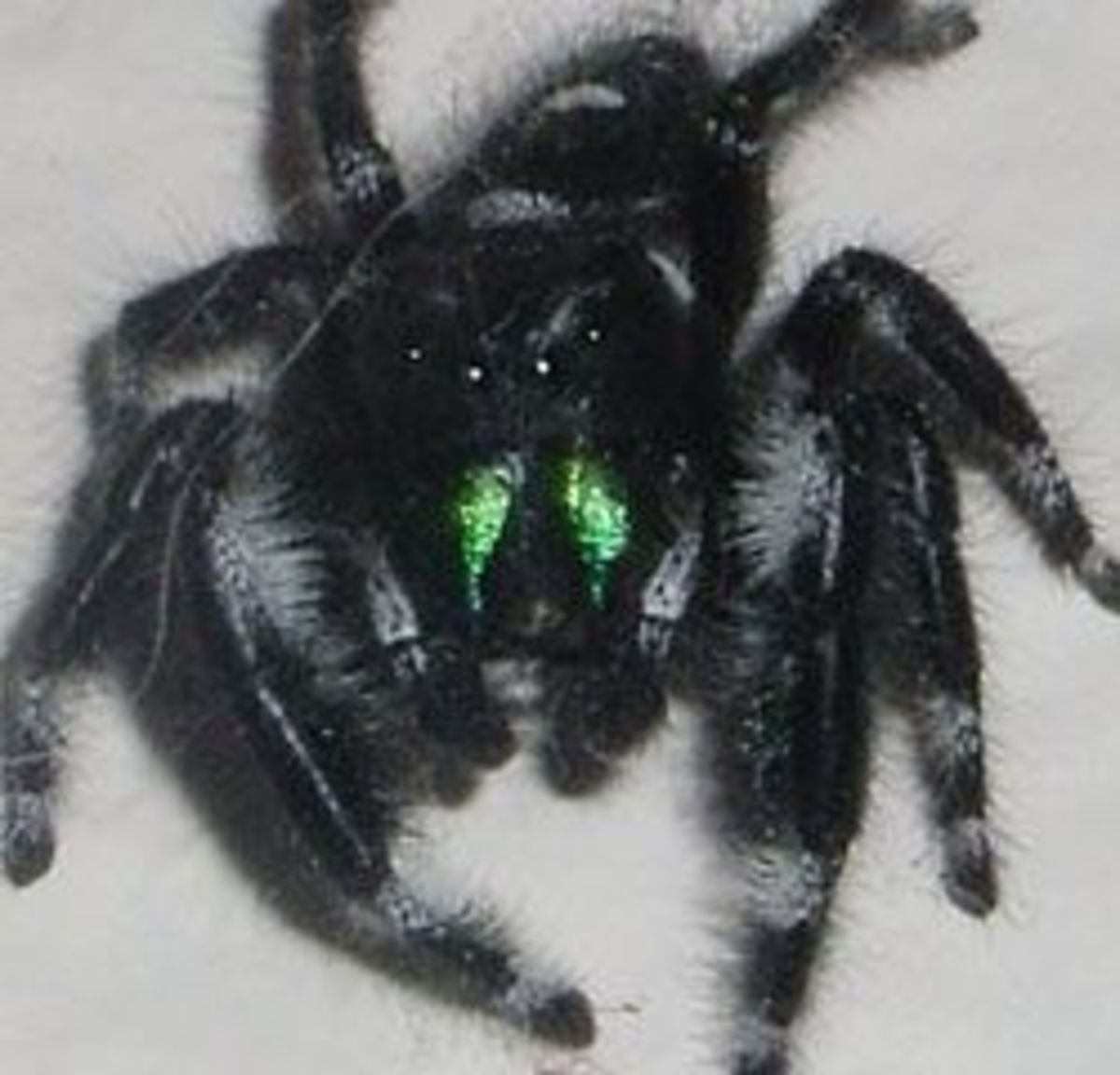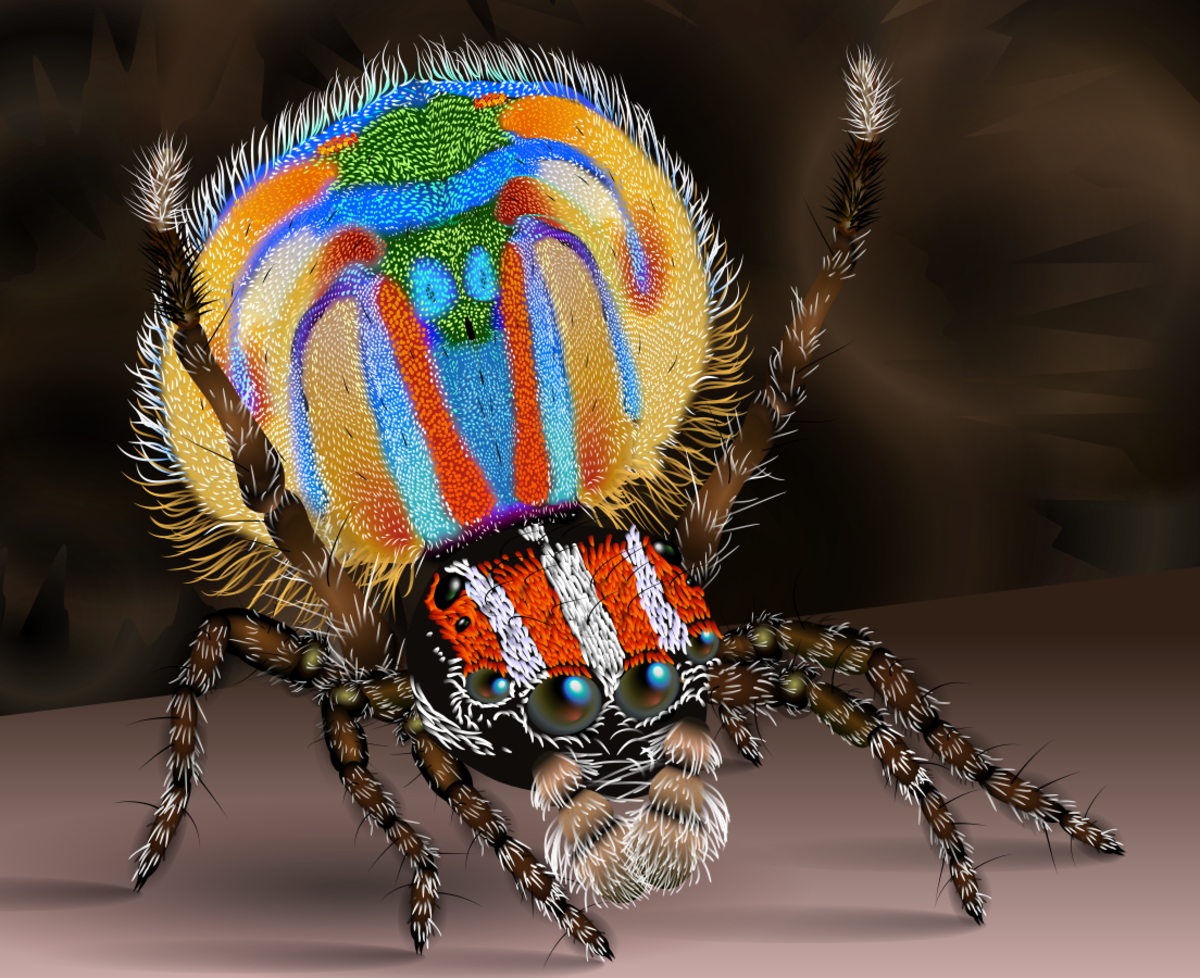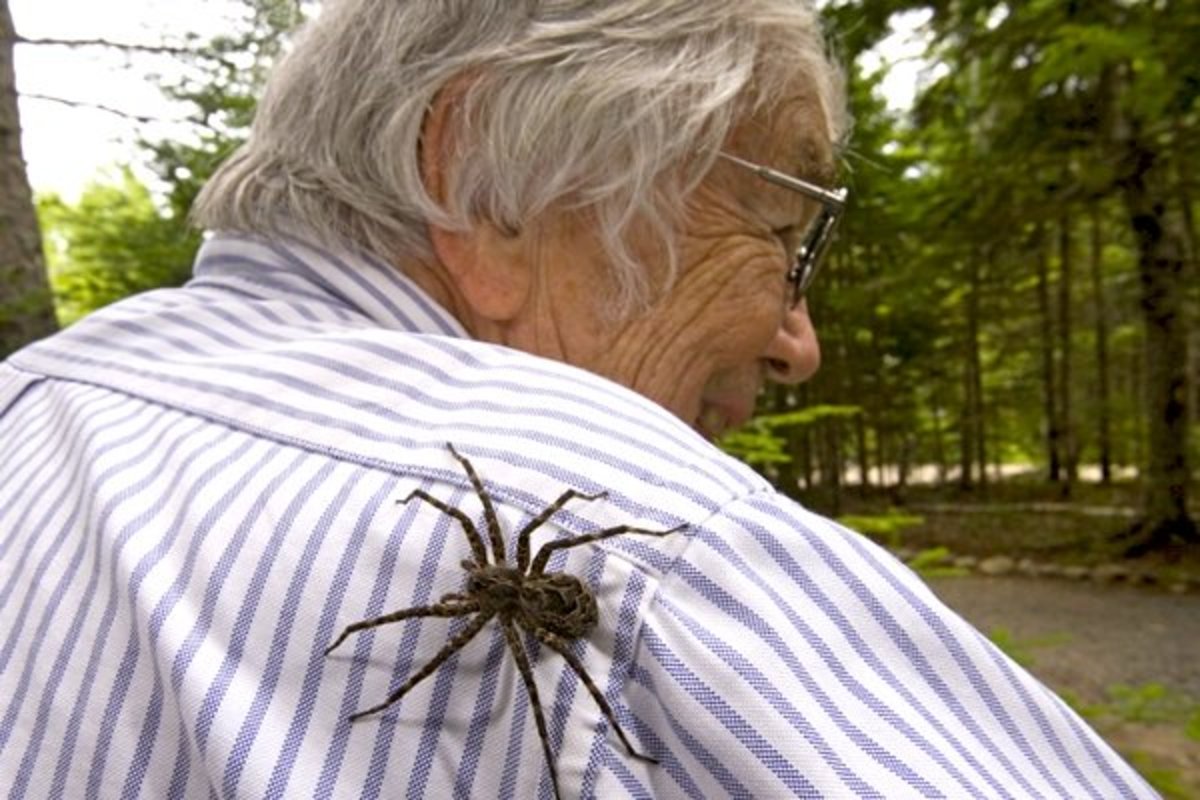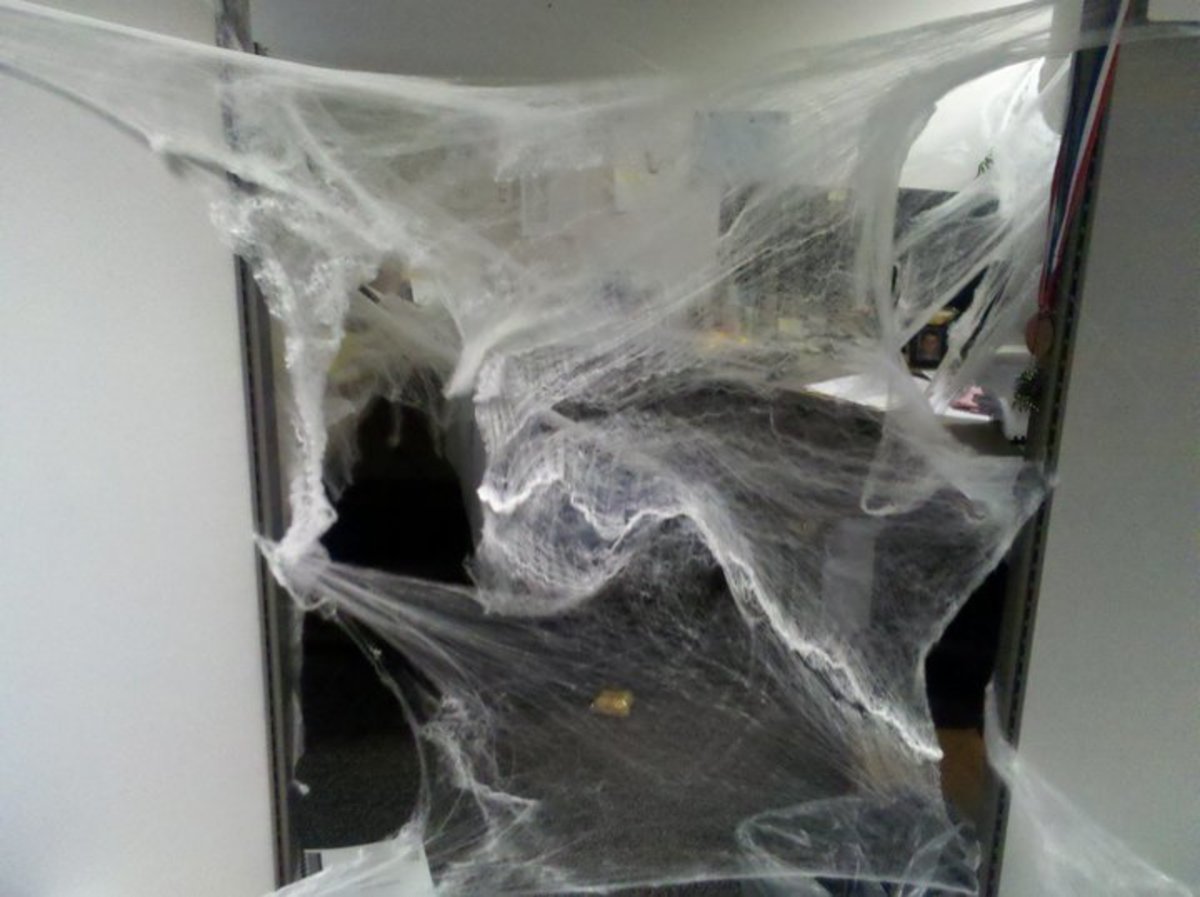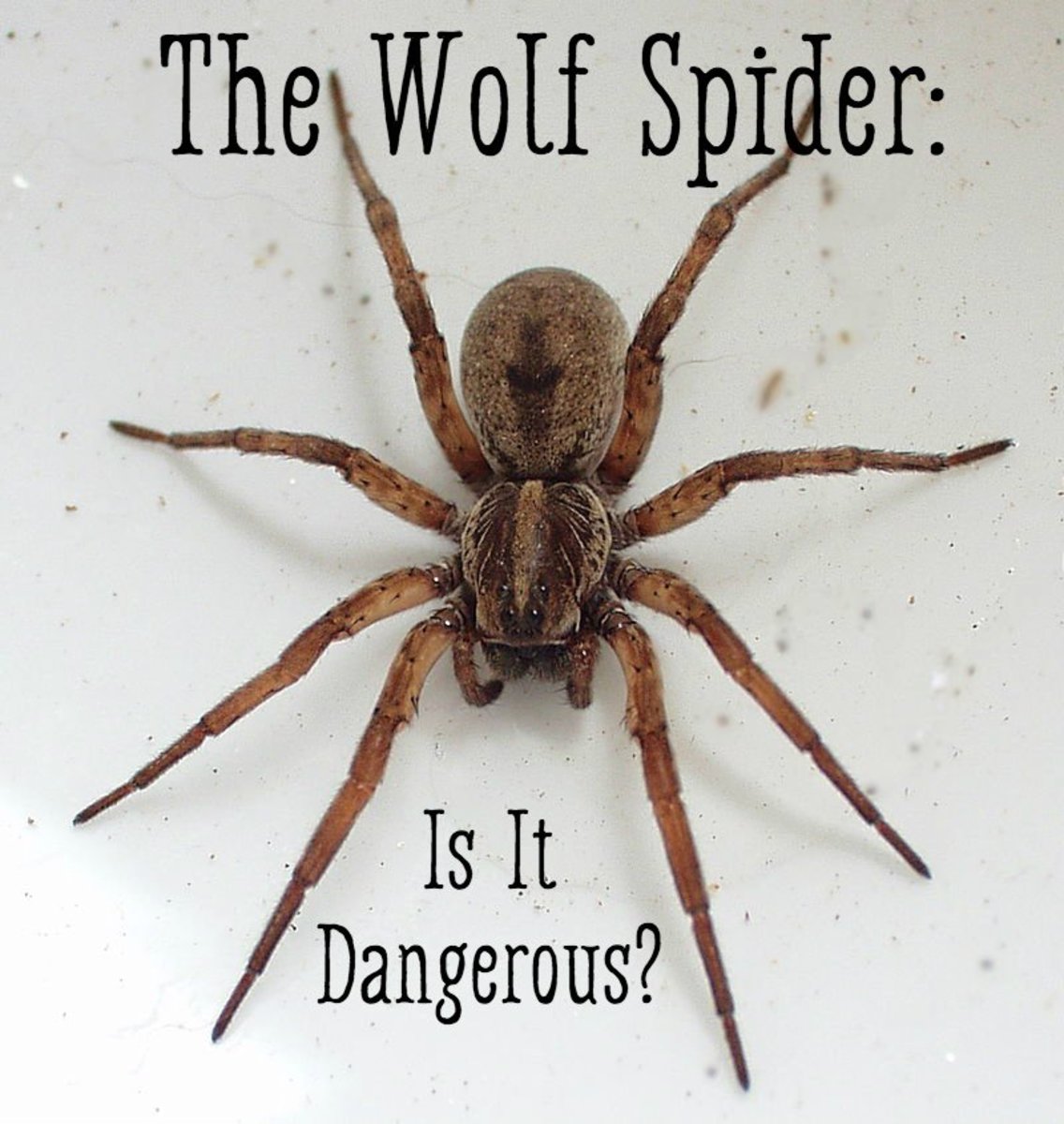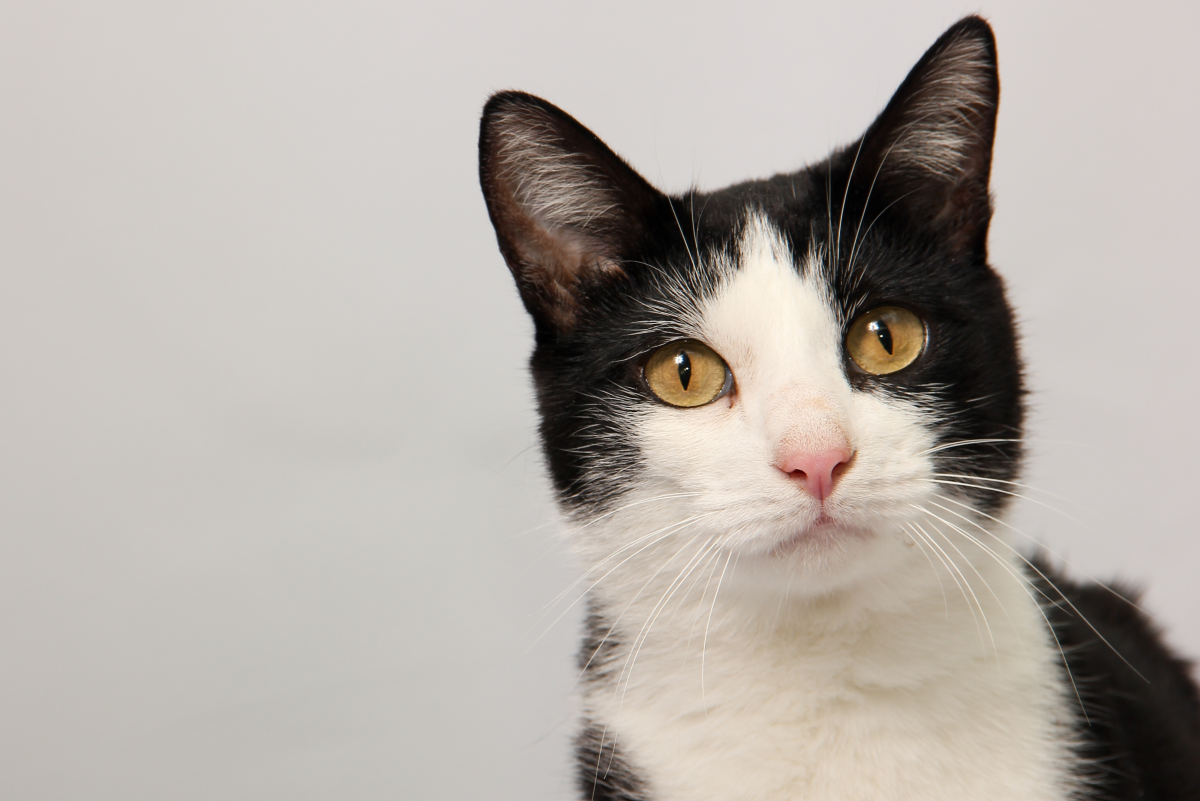10 weirdest spiders in the world
10. Simaethula aurata
Small jumping spiders.
Females are usually 2-4 mm and males 1-3.
They shine beautifully in the sun like they are covered with glitters.
There isn't a lot known about these spiders for the rest.
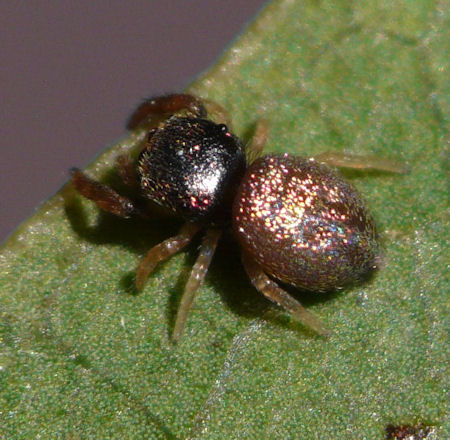
9. Maratus volans (peacock spider)
The Maratus volans or better known as the Peacock spider lives up to his name, with lots of bright colours on his back and head.
This spider has a cape or flaps around its abdomen. When the male mates with his relatively duller mate, he expands his flaps like a peacock's tail and raises his white hair tipped legs.
A spectacular dance!
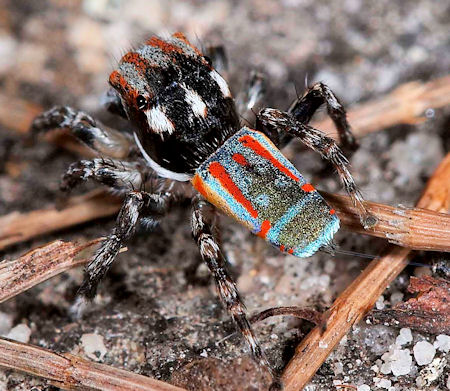
8. Mopsus Mormon (Green Jumping Spider)
This spider is found in Eastern Australia and New guinea. It's Australia's largest jumping spider.
The bright green female measures up to 18mm and the male is around 12mm in body length.
Their color varies widely with their surrounding, but the predominant color is green. Can be found on broad green leaves and tree trunks.
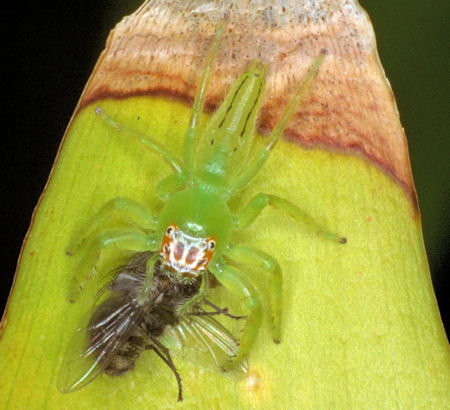
7. Thomisus spectabilis
Another Australian spider! This spider camouflages itself to catch insects and even bees who come near flowers. As you can see in the picture, the camouflage works pretty well.
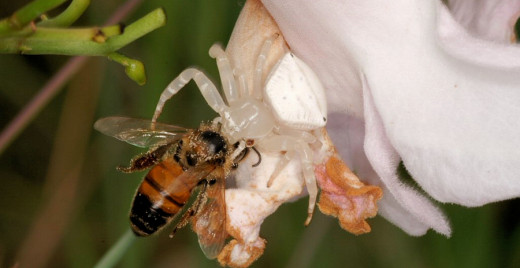
6. Arachnura higginsi (Scorpion-tailed spider)
Only the female of this species has the Scorpion tail. The female is around 15mm large and the male is lots smaller with only 2-3mm length.
The spider is found in all states in australia and is supposedly harmless to humans.
They spin circular webs that look a bit like a wooly stick.
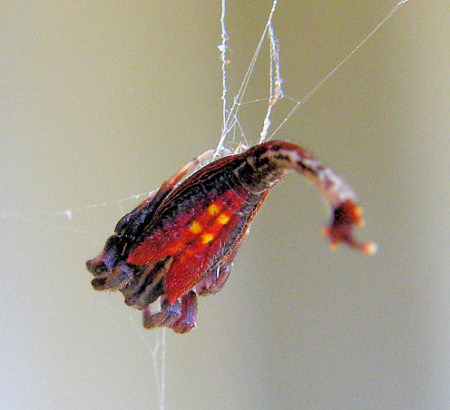
5. Theraphosa blondi (Goliath birdeater)
This is the second largest spider in the world by leg span, and might be the largest in the world by mass. The name is not entirely accurate, because they do not primarily prey on birds.
It is found in the rain forest regions of northern south america.
Females sometimes eat the male after mating.
Can have a leg span up to 30 cm.
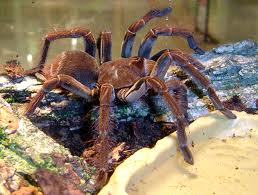
4. Celaenia excavata (Bird dropping spider)
This spider is named like this because he closely resembles bird droppings. Wich is the ultimate deterrent for predators.
The females are about 12mm and the males about 2.5mm.
For hunting the spider hangs down from a silk thread and releases a pheromone that mimics that of a female moth. When a moth comes near the spider will catch it with his powerfull legs!
an be found in Australia, mainly along the Eastern and Southern coasts.
They can cause mild illness in humans if bitten.
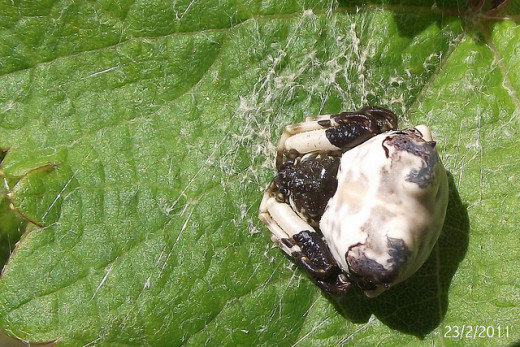
3. Assassin spider (spidsnuck)
The assassin spiders are definitely one of the most bizarre species of spiders. They have the very distinct feature that they have a neck. Wich is not very common with spiders. The neck can be long and slender or short and fat. They were discovered from 40 million year old fossils in Europe in the 1840s and the first living relatives were found in 1881.
They live in Australia, South Africa and Madagascar.
They feed almost exclusively on other spiders, wich explains the name. They look very dangerous but are actually totally harmless to humans.
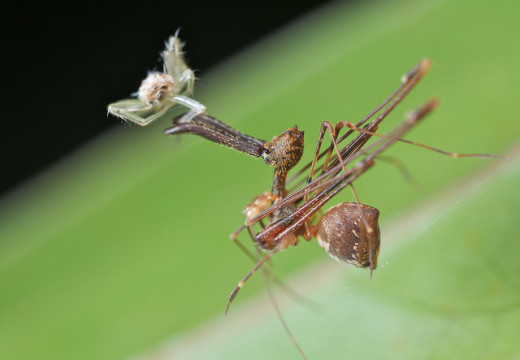
2. Camel spider (solifugae)
The camel spider is really a very fascinating spider, actually it isn't even a spider, it is a distinct arachnid order, like scorpions. They are also known as sun spiders, solifuges and wind scorpions. The biggest ones of this order can have a leg span of 12 centimeters, so they are not as big as the urban legends make you believe. they can run at speeds of 30mph.
Solifugae are not dangerous for humans although they definitely look like they are.
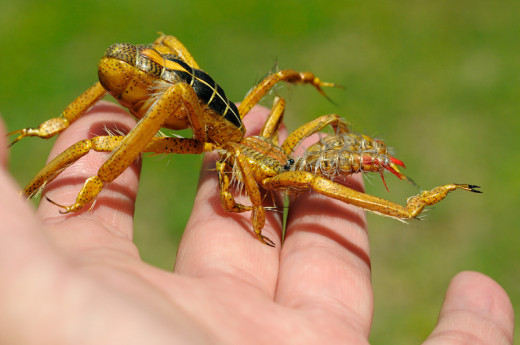
1. Gasteracantha westringi (Rainbow spiny orb weaver)
These spiders are really beautifull, they don't even look like spiders. So if you have arachnophobia, this could be the spider to help you! You can't be scared of something so pretty.
They are also called horned spiders, because they have horns believed to be a deterrent to birds. These spiders als add small silk flags to their webs, so it becomes more visible for birds. They can then steer away from the web before getting entangled. This rainbow spiny orb weaver on the picture is only one of the horned spiders, but there are more then 70 known species of them all over the world, with different colors and shields.
They make large orb webs, hence the name.
